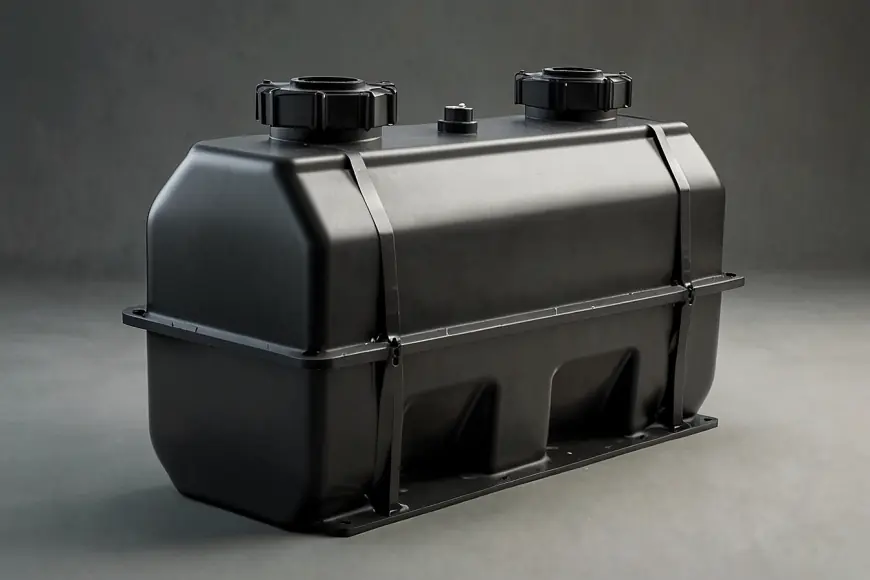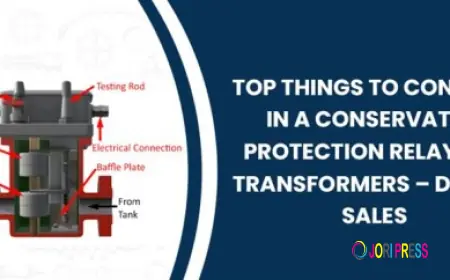Automotive Coolant Reservoir Tank Market Growth by 2030
Market growth is fueled by the expanding automotive sector and increasing vehicle production, driving demand for components like coolant reservoir tanks.

Industry Key Highlights
The global Automotive Coolant Reservoir Tank Market is experiencing robust growth, propelled by the increasing demand for advanced vehicle components that enhance engine performance and cooling efficiency. In 2024, the market was valued at USD 4.19 billion, and it is projected to grow at a compound annual growth rate (CAGR) of 7.36%, reaching approximately USD 6.42 billion by 2030. This acceleration is attributed to a surge in vehicle production, rising fuel efficiency standards, and the growing adoption of electric vehicles (EVs), all of which demand more sophisticated thermal management systems.
Coolant reservoir tanks, often overlooked, are critical to a vehicle’s engine cooling architecture. These tanks store excess coolant fluid and help maintain optimal engine temperatures under diverse operating conditions. As the complexity of modern engines increases, so too does the need for efficient, durable, and environmentally conscious cooling solutions.
The market is further energized by the transformation of the automotive industry—driven by sustainability goals, advanced material science, and electrification. With environmental regulations becoming more stringent and OEMs (Original Equipment Manufacturers) demanding higher performance, the coolant reservoir tank segment is emerging as a vital contributor to the next generation of vehicles.
Emerging Trends in the Automotive Coolant Reservoir Tank Market
1. Rise of Eco-Friendly and Recyclable Materials
A significant shift is occurring in the materials used for manufacturing coolant reservoir tanks. Modern designs increasingly incorporate lightweight and recyclable polymers, replacing traditional heavy-duty plastics. These materials are not only durable but also align with global sustainability mandates, allowing OEMs to meet environmental compliance without compromising performance.
2. Growing Integration with Smart Vehicle Systems
As vehicles become more technologically advanced, there’s a trend toward smart integration of coolant tanks with other thermal management systems. These reservoirs are being embedded with sensors to monitor temperature, fluid levels, and coolant quality in real-time. Such enhancements support predictive maintenance, which is essential for fleet managers and individual users alike.
3. Increased Demand from the Electric Vehicle Segment
Electric and hybrid vehicles require sophisticated cooling systems to manage battery temperatures, power electronics, and electric motors. As a result, there is a rising demand for high-efficiency, compact, and adaptive reservoir tanks specifically tailored for EV platforms.
4. Modular and Customizable Designs
Manufacturers are now focusing on modular designs that can be customized for various vehicle models and configurations. This adaptability not only improves design flexibility for automakers but also streamlines production and inventory management.
5. Use of Advanced Manufacturing Technologies
Technologies such as blow molding, injection molding, and 3D printing are being employed to enhance precision, reduce waste, and speed up production cycles. These advancements are crucial in maintaining cost-effectiveness while achieving the high-performance standards required in the automotive sector.
Download Free Sample Report: https://www.techsciresearch.com/sample-report.aspx?cid=22077
Market Drivers: What’s Powering the Growth?
1. Increased Global Vehicle Production
The resurgence of the automotive manufacturing industry, particularly in emerging economies like India, Brazil, and Southeast Asia, is boosting demand for automotive components including coolant tanks. The sheer volume of vehicle production creates consistent demand for reliable and scalable cooling solutions.
2. Regulatory Push for Emissions Reduction
Governments worldwide are enforcing stringent emission and efficiency standards, pushing automakers to optimize engine performance. Efficient cooling systems help engines run more efficiently, thereby reducing emissions and fuel consumption—directly impacting the demand for high-quality reservoir tanks.
3. Rise in Demand for Heavy-Duty Commercial Vehicles
The commercial vehicle segment is expanding rapidly, particularly in logistics, construction, and mining sectors. These vehicles operate in demanding environments and require robust cooling systems to ensure engine longevity. This is creating heightened demand for heavy-duty coolant reservoir tanks.
4. Accelerated Electrification of Mobility
EVs generate substantial heat from battery operations, requiring advanced thermal management systems. Coolant reservoir tanks are now being specially engineered to handle these unique requirements, leading to a whole new segment of growth within the industry.
5. Technological Advancements in Automotive Design
With the development of turbocharged engines, hybrid drivetrains, and autonomous driving systems, vehicle engines and electronics generate more heat than ever before. This complexity makes efficient cooling systems not a luxury but a necessity.
Segmentation Insights
The market is segmented by type, application, and region:
-
By Type:
-
Pressurized Coolant Reservoir Tanks
-
Non-Pressurized Coolant Reservoir Tanks
-
-
By Application:
-
Passenger Vehicles
-
Commercial Vehicles (fastest-growing segment)
-
-
By Region:
-
North America (fastest-growing region)
-
Europe
-
Asia-Pacific
-
Middle East & Africa
-
South America
-
The commercial vehicle segment stands out due to the demanding operational environments and the increasing reliance on long-haul logistics, particularly in the e-commerce sector. These vehicles require advanced and durable cooling solutions to maintain performance.
Regional Insights: North America Leads Innovation
North America is emerging as a pivotal region in this market. The region’s strong automotive heritage, coupled with rapid EV adoption, is fostering demand for sophisticated cooling components. Moreover, environmental regulations in the U.S. and Canada are prompting manufacturers to innovate and adopt green manufacturing practices.
This region also boasts the presence of major industry players and R&D hubs, making it a hotspot for technological advancements. The commercial fleet expansion—driven by e-commerce, freight transport, and urban mobility services—further fuels the need for high-efficiency coolant reservoir tanks.
Competitive Analysis: Major Players & Strategies
The global Automotive Coolant Reservoir Tank Market is highly competitive, with key players continuously striving to stay ahead through innovation, strategic partnerships, and regional expansions. The following companies are leading the charge:
-
TI Fluid Systems plc – A global leader in automotive fluid storage, delivering integrated solutions with a strong R&D focus.
-
Magna International Inc. – Known for its diversified automotive product portfolio, including thermal management systems.
-
Continental AG – Renowned for engineering high-performance cooling components and systems.
-
Cooper-Standard Holdings Inc. – Offers advanced fluid handling systems, including reservoir tank assemblies.
-
MAHLE GmbH – A prominent supplier of thermal management systems, with emphasis on fuel economy and emissions.
-
YAPP Automotive Systems Co., Ltd. – Specializes in lightweight plastic fuel and coolant tanks.
-
OPmobility SE – Focuses on smart thermal solutions for electric and autonomous vehicles.
-
Toyoda Gosei Co., Ltd. – A manufacturer of rubber and plastic components, including coolant tanks.
-
Kautex Textron GmbH & Co. KG – Leads in the development of blow-molded plastic fluid systems.
-
Hella GmbH & Co. KGaA – Provides smart electronics and thermal solutions integrated with reservoir technologies.
These companies are actively investing in material science, automation, and sustainability initiatives to maintain their market positions.
Future Outlook: What Lies Ahead?
The future of the automotive coolant reservoir tank market looks dynamic and innovation-driven. As the industry transitions toward sustainable, electric, and autonomous mobility, the role of thermal management systems will become more critical than ever.
Over the next five years, we expect:
-
Further innovation in composite materials that reduce weight while enhancing durability.
-
IoT integration enabling smart diagnostics and predictive maintenance.
-
Regional diversification, with Asia-Pacific and Latin America emerging as major production and consumption hubs.
-
OEM-supplier partnerships aimed at co-developing customized cooling systems for next-gen vehicles.
Market players that embrace digitalization, green manufacturing, and modular designs will find themselves at a competitive advantage in the evolving landscape.
10 Key Benefits of This Research Report
-
Comprehensive Market Overview: Understand global and regional market dynamics through detailed data and projections.
-
In-depth Segmentation Analysis: Explore performance across type, application, and geography.
-
Trend Identification: Recognize emerging material, technology, and sustainability trends shaping the market.
-
Competitive Landscape Mapping: Gain insights into strategies, product offerings, and innovation pipelines of major players.
-
Forecast Data till 2030: Plan strategically using CAGR, revenue, and volume forecasts.
-
Application-Specific Insights: Understand differences between passenger and commercial vehicle needs.
-
Regional Growth Opportunities: Identify high-growth regions like North America and Asia-Pacific.
-
Technological Developments: Track advancements in smart reservoirs and cooling integrations.
-
Regulatory Impact Assessment: Stay ahead with analysis of environmental and safety regulations.
-
Customized Recommendations: Use strategic insights for investment, expansion, or R&D alignment.
Conclusion
The global automotive coolant reservoir tank market is not just growing—it is transforming. From being a simple component in traditional engines, coolant tanks have evolved into critical parts of a vehicle's thermal management ecosystem. With electric vehicles on the rise, stricter emission regulations, and the push for energy efficiency, the demand for smart, sustainable, and adaptive reservoir tank solutions is set to grow exponentially.
Companies investing in innovative materials, integrated systems, and eco-conscious production are likely to lead the next phase of market evolution. With competitive forces intensifying, the stage is set for rapid technological transformation and strategic consolidation in this vital automotive segment.
Contact Us-
Mr. Ken Mathews
708 Third Avenue,
Manhattan, NY,
New York – 10017
Tel: +1-646-360-1656
Email: [email protected]
Website: www.techsciresearch.com
What's Your Reaction?
 Like
0
Like
0
 Dislike
0
Dislike
0
 Love
0
Love
0
 Funny
0
Funny
0
 Angry
0
Angry
0
 Sad
0
Sad
0
 Wow
0
Wow
0

















































